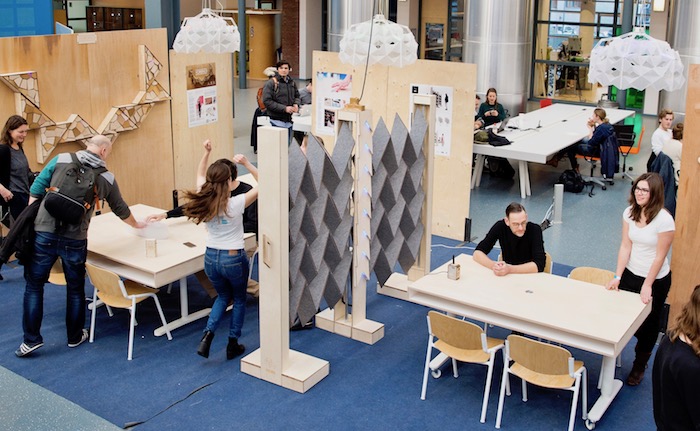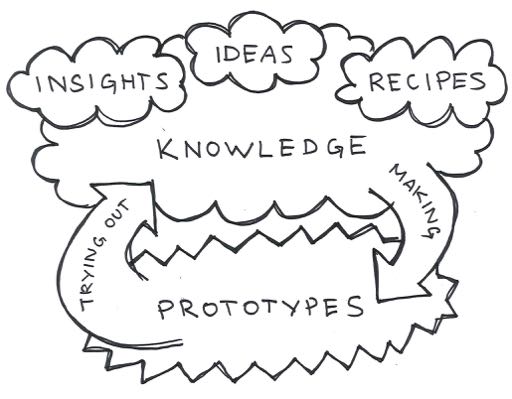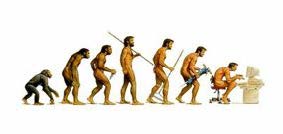Fundamentals
This minor program is called “interactive environments”. Did you wonder what the term “interactive environment” really means? The word “environment” on its own refers to everything that surrounds and influences us. It’s a very broad notion and we often use various adjectives to narrow it down.
For example, by referring to the “natural environment”, we typically mean everything around us that has not been transformed by humans. We can also use the term “built environment”, which refers to buildings and all kinds of other man-made structures such as roads or bridges. We can also think of a “social environment”, which refers to all other people that have some direct or indirect influence on us.
However, unlike the obvious kinds of environments listed above, the term “interactive environment” may be less straightforward to understand. We have chosen the name “interactive environments” to describe a new kind of environments whose many parts dynamically “interact” with one another and with people.
You might have encountered such environments in the form of interactive art installations, “smart” homes, or automated office spaces. Such environments may have many different functions, but what they have in common is the use of digital technology to enable them to interact with people. They also often leave us behind with a feeling that so many more functionalities and experiences could be created with interactive technology

There are a number of topics relevant for the work in the minor. We have short descriptions and some references for each of these in the sections below.
More than two decades ago Mark Weiser was the first to write about “ubiquitous computing”. In an article for the Scientific American entitled: The Computer for the 21st Century he has described a world where the application of digital technology is no longer restricted to our desktop computers but instead becomes embedded in clothes, rooms, furniture and buildings. In many ways, this vision has become reality.
Today we all carry smartphones with us, more and more gadgets and appliances around us are “smart” devices connected to the Internet. Buildings in which we live are commonly fitted with digital technology e.g. smoke detectors, light detectors, systems for RFID based access to rooms, etc.
However, most of the existing “smart” devices and systems operate in isolation or even interfere with each other. Users find them intrusive and difficult to use. It is our challenge to embed ubiquitous computing in the spaces of buildings in such ways that it becomes a natural part of daily practices of building occupants and that it enables new opportunities for people.
“Right now is the time to create a practice of ubiquitous computing user experience design. The technology is ready. Consumers are ready. Manufacturers are ready. The world is ready. Now it's up to designers to define what that practice will mean.”
- Mike Kuniavsky – 2010
In recent years the practitioners in the field of ubiquitous computing have become aware that answering the question of how to design for ubiquitous computing should be answered by considering the context of the experience of people in a holistic manner. This entails obtaining an understanding of the situation where people interact, the attitude or concerns of people when they interact and the dialog that unfolds between people and designed objects. In addition, central to this understanding is that all these aspects are dynamic and will change over time.
A designer should work form the realization that there are multiple parties involved eg. the designer, the person to design for (the user) and the client (the party who pays for the work) all with their own objectives and motivations. The success outcome of the project should present al compelling story for all parties. As a designer, you will have personal motivations to engage in design (eg. creating a sustainable world) and a client might be motivated by making a financial profit. In the end, it should all tie in together to address the psychological need(s) a user has while engaging with the proposed design (self-fulfilment, psychological and basic needs).
Experience design is an umbrella term encompassing many disciplines and approaches (such as user centred design). An experience-driven design process involves multi-disciplinary experts (such as architects, visual artists, programmers, mechanical engineers, designers, etc.) in an attempt to design meaningful interactions. The process is characterized by solving the design opportunity in multiple iterations, converging to a successful end-design in steps of progressive refinement - from rough prototype to a full scale interactive prototype, which is (from the outside) indistinguishable from a final end product.
Under the umbrella of experience design, user-centred design is an important approach that we mention separately here. User-entered design is characterized by treating the meeting of needs of future users of designed products, services, buildings or installations as the most important criteria for guiding the design process and determining the success of the final design. Within the user-centred design, the tendency is to involve users in the design process through “co-creation” and treat them in this process as “experts on their own lives”.
Links:
In a traditional “waterfall” design process, design activities are performed as consequential stages, starting with the definition of requirements, followed by analysis, concept design, construction, integration, testing and finalization of an artefact, building or service, with repetition of this cycle or its parts taking place only when serious obstacles arise.
On the contrary, in iterative designing all these activities are continuously performed in cycles, sometimes even several times per day. This approach is very useful for dealing with complex and “wicked” problems. Each cycle gives us new insights, allows us to test our assumptions and permits us to re-evaluate our initial understanding of the problem at hand.
Iterations can occur on the scale of an entire design process going through all different design activities. However, iterations can also occur within each specific design activity. In the minor, we will use an iterative designing model, which helps us to reflect on the iterative designing process.
In this model three main types of design activities are defined and experiential prototyping is placed in the middle, as the fourth design activity that binds together all other activities in the design process.

Figure 2. In iterative designing prototypes enable generation of three different kinds of knowledge
Prototypes play an important role in an iterative design process. They allow testing various aspects of the design solution, they provide new insights and ideas, and they make it easier to communicate the design within the team and to the outside world. Prototypes are not meant to be perfect. In fact, the faster you can make and test a prototype, the more design cycles you will be able to perform and the better your final result will be.
Interactive experiences can be explored or designed using, for example, storyboards, flowcharts, enactments or other techniques such as “Wizard of Oz” (ie. a person activating product behaviour). However, creation of “hi-fi” interactive prototypes is essential for evaluating more intricate aspects of the interactive experience, for verifying the realism of assumed technical solutions, for finding technological bottlenecks, and for refining the interactions and exploring their subtle variations.
The maker culture (also called the maker movement) has emerged out of the increasingly popular do-it-yourself (DIY) attitude extended by the use of new technologies, which traditionally have been the domain of experts only. This phenomenon relies to a high extent on the open source software and electronic hardware, as well as web communities sharing their practical know-how.
The maker movement is often closely associated with such developments as cheap 3d printing or crowdsourcing. It is also idealistically viewed as a response to the western culture’s consumerist lifestyle, whereby generic mass-produced objects are no longer purchased by individuals, but locally made, improved and customized to their specific needs and preferences.
The maker culture has inspired the learning-by-doing approach in deign education, finding its way from hackerspaces and Fab-Labs to schools and universities. In the course of the minor, we strongly encourage to use the tools and resources originating from the maker culture. They will be essential for bringing your interactive prototypes to success.
Some of the popular maker culture websites are:
Digital fabrication is a broad term denoting various kinds of digitally controlled machines used to process materials. It has been ubiquitous in the industry for decades, however due to decreasing costs, miniaturization and popularization of computer numerically controlled (CNC) machines, recent years have made the general public more aware of new possibilities that these machines offer. These are namely the high precision, fast speed and relatively low cost of fabricating custom elements. CNC machines include, among others, laser cutters, CNC milling machines, industrial robots and recently very popular 3d printers.
Popularization of digital fabrication may bring many new opportunities to our society, including allowing end-users to customize products to their liking, produce them locally and innovate on their own. It also promises to transform the production economy based on the principles of massproduction, to the economy of mass-customization. In architecture, we can already observe that many buildings are being designed and built out of non-repetitive elements. In product design, more and more brands follow Freitag or Nike in offering their clients an option to customize ordered products, while parametrically generated unique 3d printed jewellery is being produced by multiple start-ups worldwide.
In the course of the minor you will be encouraged to take advantage of digital fabrication facilities available on the TUD campus and incorporate them in your project. You will also learn the basics of parametric and generative 3d modelling to allow you to take full advantage of digital fabrication.
Currently a large part of most people’s lives is dominated by screens. Phones that we interact with through swiping gestures or by asking questions, laptop screens that can do both and have a keyboard and some type of pointer device. These devices are fantastic and it is impossible to ignore them. However, taking an outside perspective it can be seen that these screens require a very specific type of interactions from people. An interaction that is cognitively heavy, it requires using your eyes and making sense of what is shown on the screen to determine action possibilities (buttons, menus, etc.) and it requires users to only employ a very small range of the expressive capabilities of the human body to trigger actions (typically fingers pressing keys and swiping across the screen).

Figure 3. The evolution of man from ape to knowledge worker, can you recognize the poor state of our current state
with respect to utilization of the expressive capabilities of the human body?
At the start of the 20th century, the field of Tangible Interaction was started with the promise to tap into our familiarity with the physical world and provide an improved understanding of the digital by representing it physically.
Designers and researchers have been developing devices and interfaces that invite for full body movement and interactions on a more expressive scale than detailed mouse and key pressing movements. In our minor, we also encourage these exploring possibilities to engage more of our bodies in the interaction.
Design is often using screens as a one stop solution overlooking other possibilities to make sense of the devices and the data they present. We encourage our students to find examples of tangible interaction and make a strong reservation in allowing screens, apps or websites in the projects of the minor.
Links:
